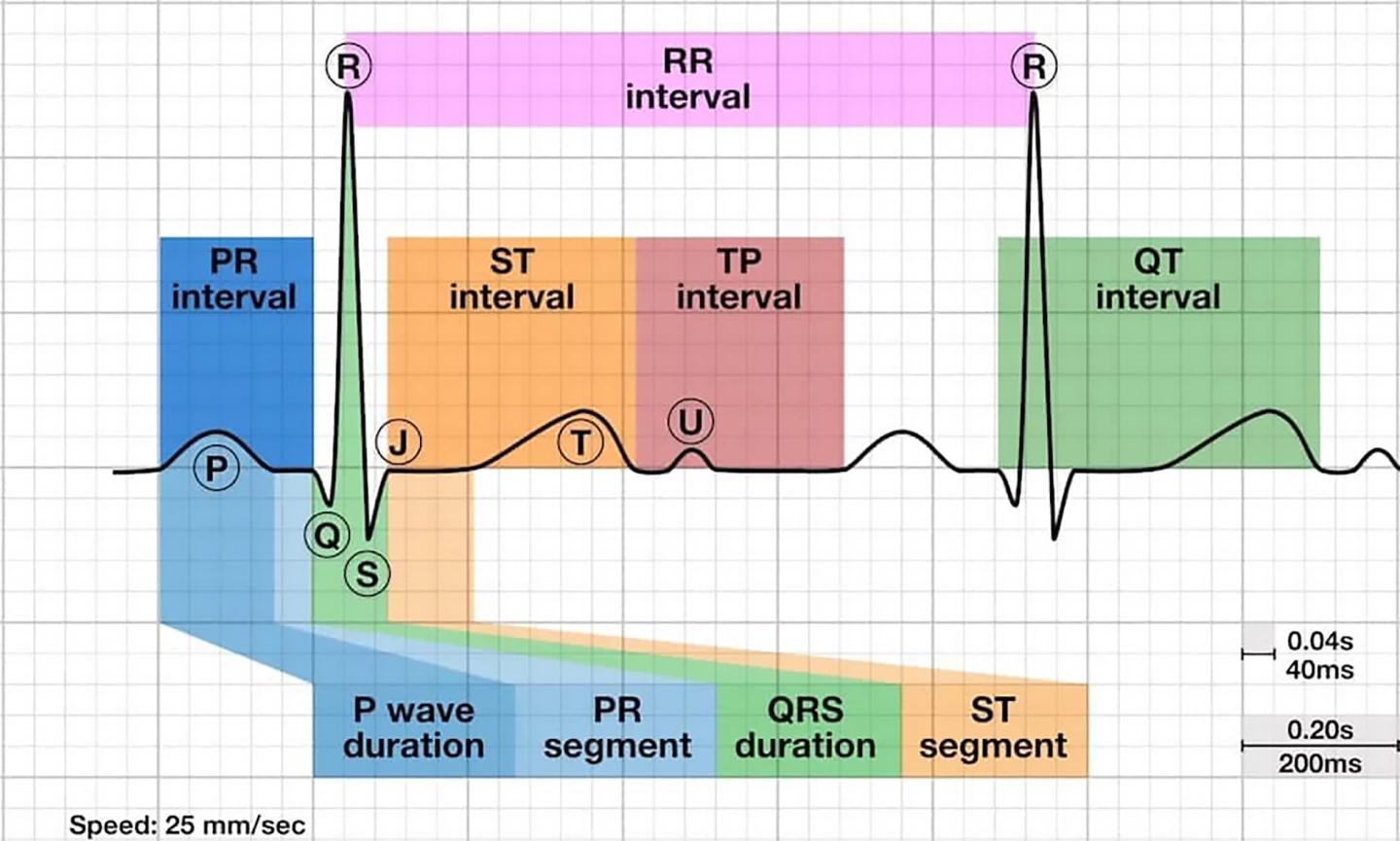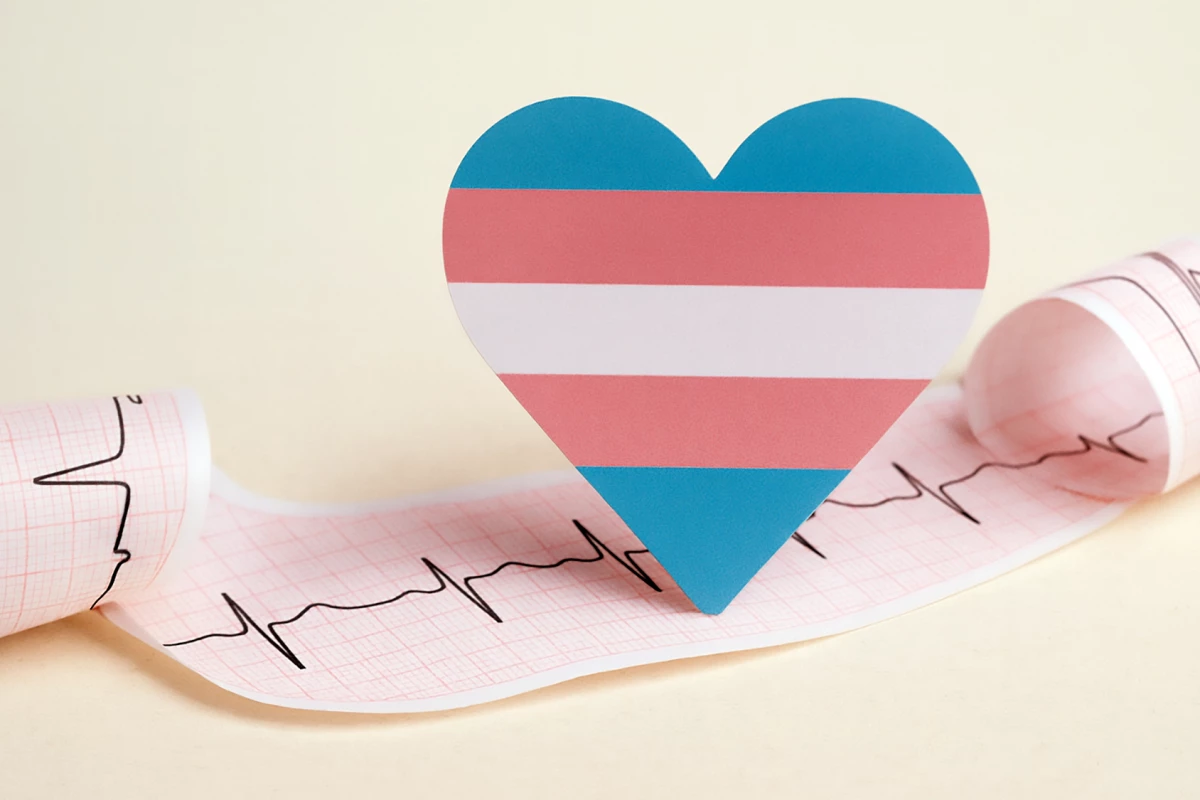Gender-affirming hormone therapy does more than reshape the body; it shifts the heart’s electrical rhythm, too, helping it align with a person’s gender identity, according to new research into cardiac changes in transgender individuals.
Gender-affirming hormone therapy (GAHT) helps align a person’s physical characteristics with their gender identity. Transgender women usually take antiandrogens with estrogen (or castration) to reduce the effects of androgens such as testosterone and induce feminization. Whereas transgender men take testosterone to induce masculinization.
Although emerging data suggest that GAHT is associated with an increased risk of cardiovascular disease, that link remains poorly researched. Now, a new study has investigated how GAHT affects the heart’s electrical activity in transgender individuals.
In an electrocardiogram (ECG), the PQRST wave represents the electrical activity of the heart during one heartbeat. The P wave represents the electrical activation of the atria (upper chambers) as they contract, the QRS complex represents electrical activation of the ventricles (lower chambers) as they contract, and the T wave represents ventricular repolarization, or the electrical recovery of the ventricles as they relax.
Because the QT interval, which represents the time it takes for the ventricles to contract and relax, varies with heart rate (it’s shorter at faster rates and longer at slower rates), it needs to be corrected for heart rate to provide a standardized measure. That corrected QT interval, or QTc, is what the researchers looked at particularly in the present study. Normal QTc values vary slightly by sex and are usually around 350-450 milliseconds (ms) for men and 360-460 ms for women. Abnormal values can be an indicator of heart rhythm problems, including the potentially fatal condition Torsades de Pointes (TdP).
Between January 2021 and January 2023, a total of 135 transgender individuals visited the endocrinology department of the Bordeaux University Hospital, France. Of those, 120 individuals (64 trans men and 56 trans women) were included in the study, with some already receiving GAHT. A subset of 33 participants (18 trans men and 15 trans women) had ECGs before and after starting GAHT, allowing longitudinal analysis. The researchers recorded participants’ ECG features, including QTc, blood hormone levels (testosterone, estrogen, progesterone, prolactin, and gonadotropins), as well as other clinical data such as weight, blood pressure, and medication use. Patients with known congenital long QT intervals were not eligible.

After starting testosterone, transgender men showed shorter QTc intervals, –17 ms on average. After starting feminizing therapy, transgender women showed longer QTc intervals, +20 ms on average. In both trans men and trans women, higher testosterone levels were significantly associated with a shorter QTc, while lower levels were associated with QTc prolongation. The amount of change seen in QTc mirrored the typical sex-based differences seen between cisgender men and women, suggesting that GAHT restored these patterns.
“In this study, feminizing GAHT was associated with QTc prolongation in transgender women, whereas masculinizing GAHT was associated with QTc shortening,” said the researchers. “These QTc variations associated with GAHT were similar in magnitude to the known QTc sexual dimorphism observed in cisgender adults.”
The study has some limitations. The sample size was modest, especially for subgroup analyses. Some participants were missing hormone data for prolactin and progesterone. That the patients were from a single health facility limits the study’s generalizability to broader populations or healthcare settings. And the study was not designed to detect long-term cardiac arrhythmias, given the short follow-up period.
Regardless, the study’s findings have real-world implications. The QTc changes observed were physiological, not pathological and seem to be driven by hormonal levels, particularly testosterone. The shifts mimicked natural cisgender differences and, importantly, alone didn’t pose an immediate risk. However, particularly for trans women with prolonged QTc, caution is advised when prescribing other drugs known to further prolong QT, like some antidepressants or antipsychotics, as this could elevate arrhythmia risk. It’s something that ought to be discussed with a medical professional.
The study was published in the journal JAMA Network Open.






